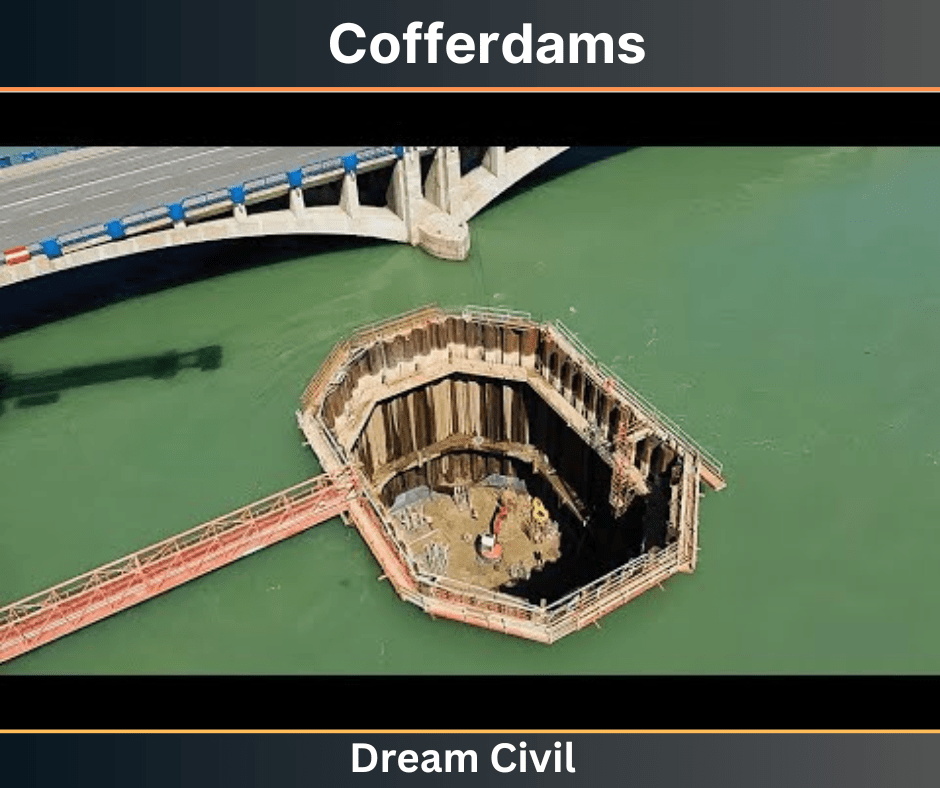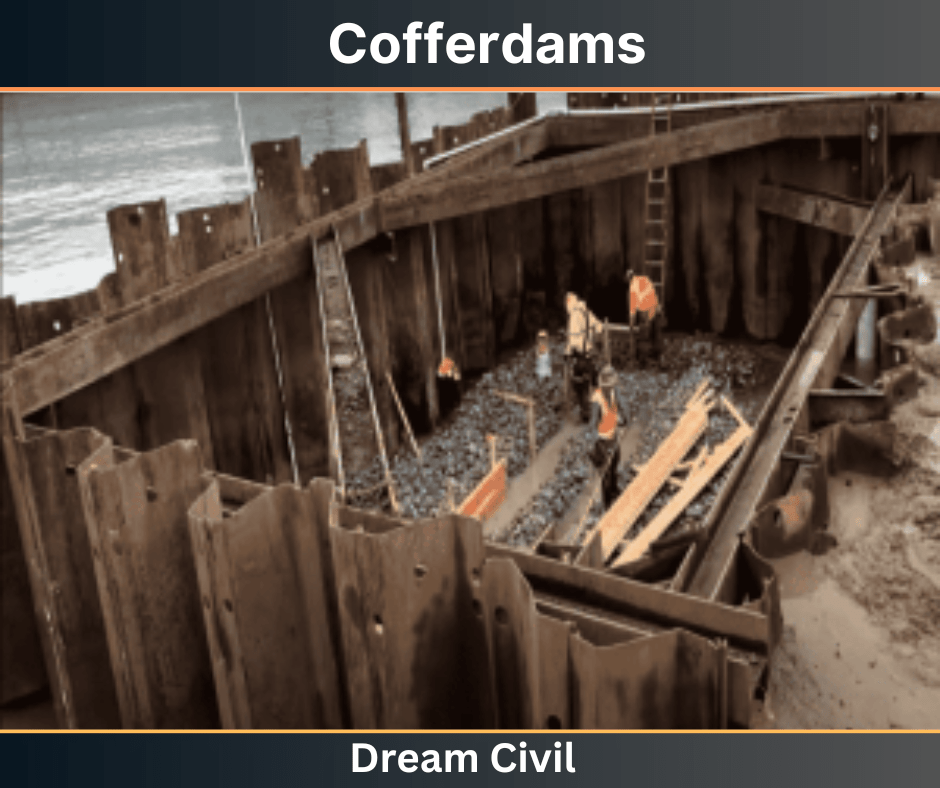Table of Contents
A cofferdams may be defined as a temporary structure plan built to hold ground and stay groundwater or water above ground level far from the place of excavation.
This allows construction to be done on dry surfaces.
Cofferdam cannot remove water from excavation fully since the construction of the such type of cofferdam would be more expensive. The seepage of water into the excavation is well-allowed and pumped out constantly.

1. Types of Cofferdams
The types of cofferdams are reliable on the material utilized in the construction, cofferdams may be divided into the following categories:
a. Earthen Cofferdam
Earthen cofferdams are generally built at the site where the height of the water is less than 3 m and the flow velocity is low.
These dams are prepared to utilize locally found materials such as clay, fine sand, or even soil.
The height of the dam should be always kept at 1 m more than that of the maximum water level.

b. Rockfill cofferdam
Rock-fill cofferdams are best than earthen dams. These dams are utilized when the rock is found easily at the local level. These dams are very pervious, to protect water from seeping an impermeable membrane of soil is kept in the dam. The height of the dam should be up to 3 m.

c. Single-walled Cofferdam
Rock-fill cofferdams are better than earthen dams. These dams are used when the rock is found easily at the local level.
These dams are very pervious, to protect water from seeping an impermeable membrane of soil is kept in the dam. The height of the dam can be up to 3 m.

d. Double-walled Cofferdam
Double-walled types of cofferdams are used when the area of the construction site is large and the depth of water is high. In this place, the use of single-walled cofferdam becomes uneconomical as the supports are to be increased. So double-walled cofferdam is used.
The difference between one wall and a double wall dam is that it has two walls instead of walls for extra stability. This type of dam can support water up to 12 m high.

e. Braced Cofferdam
When it’s very hard to penetrate piles inside the bed in the water, then this type of cofferdam is utilized. In braced cofferdam, two piles are driven into the bed and they are laterally supported with the help of wooden cribs installed in other courses to make pockets. The null pockets are filled with stone and earth.

f. Cellular Cofferdam
It is also known as the Circular or diaphragm type. When the water layer is more than 20m, common types of cofferdams are expensive to utilize. In this case, cellular cofferdams are utilized.
This type of dam is used in the construction of dams, locks, weirs, etc. A cellular cofferdam is made by driving straight web steel sheet piles, arranged to form a series of interconnected cells.

2. Criteria for Selection of Cofferdam
Here is a list of criteria for the selection of cofferdams types are mentioned below:
a. Depth of water
b. Depth and size of excavation
c.Soil type
d. The velocity of flow in waterway
e. Tide levels
f. Risk of damage by floating debris or ice
g. Availability of construction materials
h. Ease of transportation of construction materials
3. Advantages of Cofferdams
a. Permit excavation and construction of structures in an otherwise poor environment.
b. It will provide a safe environment to work.
c. The contractors typically have design responsibility.
d. The steel sheet piles are easily added and removed.
e. Materials can typically be reused for other projects.
4. Disadvantages of Cofferdams
The disadvantages of cofferdams are as follows:
a. Special and expensive equipment is needed
b. Expensive
c. It is a very time-consuming and boring process of construction
d. If rushed, sheets can be driven out of locks or out of plumb
e. When in flowing water, ‘log jams’ may occur creating added stress on the structure.
5. References1. Content Filter & Authenticity Checking Team, Dream Civil International (Our team checks every content & detail to maintain quality.) |
| Read More: Concreting Underwater Methods |

